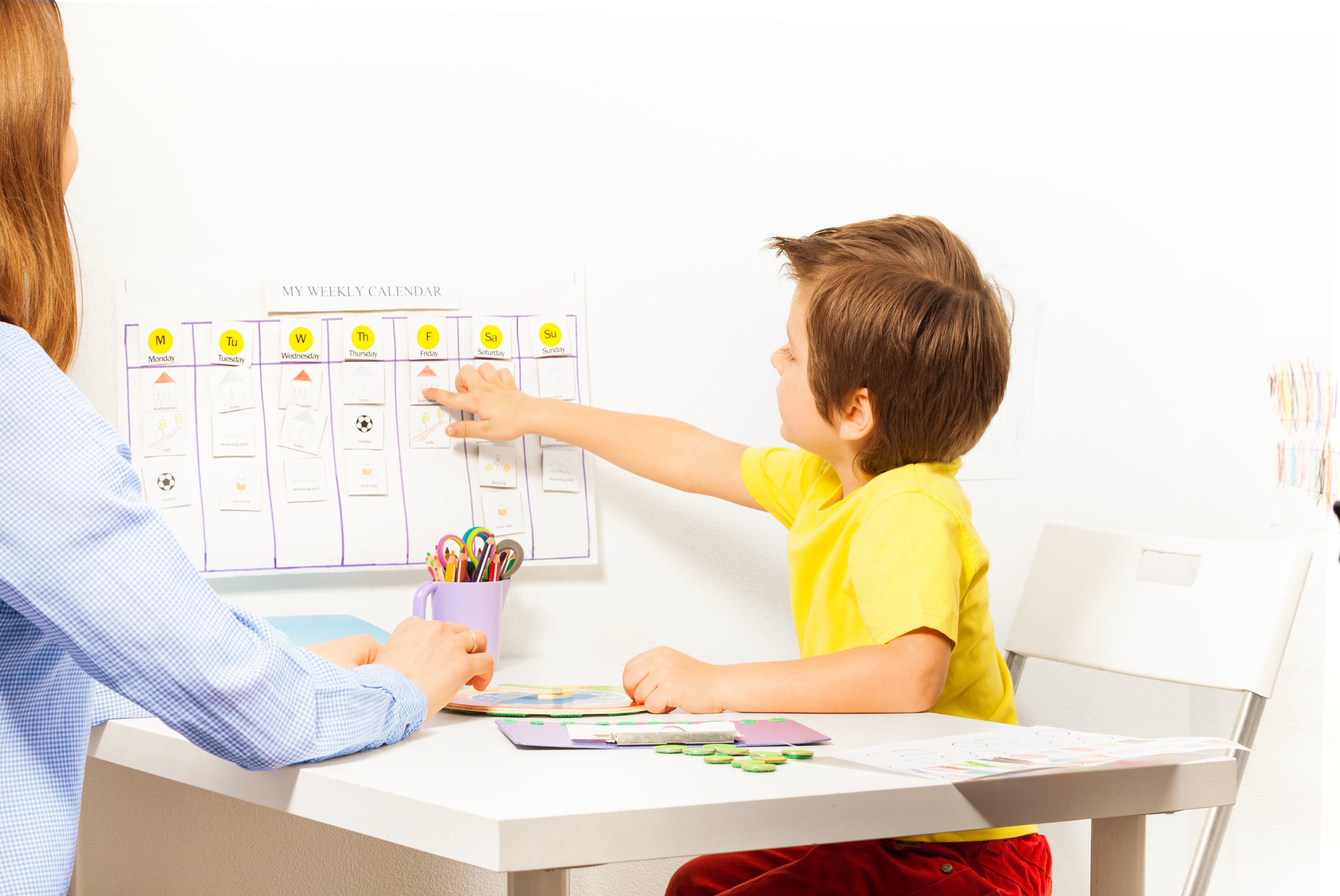3 Real-Life Ways to Organize Your Homeschool
Whether you live to color-code or need a system that flexes and changes with your family’s needs, keeping good homeschool records is essential. And you can do it — all you need is a system that you’ll actually use.
Homeschooling ends up being as much a lifestyle choice as an educational one, and like any part of a busy life, homeschooling can feel like too much some days, too little other days, and a whole lot of stress in between. A schedule isn’t going to give you more hours in the week, but the right schedule can help you make peace with the hours that you have and feel good about how you’re spending them. These three secular homeschool organization methods are flexible, friendly, and — best of all — guaranteed guilt-free, even if you don’t follow them exactly.
THE WEEKLY MEETING
Works great for: Families whose schedules change from week to week
Lara and Ken Miller had the school routine down pat, but when they decided to homeschool their 12-year-old and 9-year-old sons, it felt like everything was constantly falling apart.
“Every time I’d feel like we were getting things under control, something would change — math would get more intensive, or we’d sign up for a nature center class, or one of my sons would get a part in a community theater show,” Lara says. “There was no normal, so however hard we tried to color code or share calendars or meal plan, stuff slipped through the cracks.”
After an extended soccer season made refrigerator scramble dinners and morning late-starts all-too-common, the Millers knew something had to give. So Lara and Ken decided to give up planning in favor of taking it one week at a time. Every Sunday night, they sit down together, and figure out the week ahead. Sometimes, everything falls into a neat rhythm, but usually, they’re coordinating drop-offs and pick-ups, grocery shopping and hands-on learning time.
“None of our weeks look the same, but they feel balanced because we take the time to sit down and figure them out,” Lara says. “Stuff pops up. Stuff always does. But this level of planning means that when something pops up, we can handle it without everything else falling into chaos.”
To make the weekly meeting work for your family:
Keep a running to-do list so that all your need-tos, ought-tos, and want-tos are in one place. The key to this system is being able to accurately plot your week’s to-do list.
Plug in downtime. “Early on, we crammed every minute full, but that’s no sustainable,” Lara says. “Now I build 30-minute windows on either side of all our activities — and Ken and I put a date night on the calendar every night, even if it’s just an hour to chill and watch The Good Place.”
Keep a dry erase board for command central. The Millers in- clude what’s for dinner, classes and les- sons for each day, and extracurricular fun on theirs so that everyone knows what’s happening each day.
Use common sense. You can’t always do everything, and instead of trying, a weekly meeting lets you set your priorities. It’s easier to say, “sorry, we’re going to miss park day this week,” if you can say, “but look, we’re going to see that awesome puppet show on Thursday, and we have a playdate with Ellie and Jen.”
THE PLAN-AS-YOU-GO SCHEDULE
Works great for: Families who have trouble sticking to a schedule
We’ve been homeschooling for more than a decade, and I think I’ve tried every organization method out there — for about three weeks. No matter how hard I tried, no matter how many pretty calendars I bought, no matter how good my intentions were, planning did not work for us.
I’d schedule a day for math and science and wake up with an itch to visit the beach. Or we’d schedule two hours for history and end up spending a week on a rabbit trail that we couldn’t resist. It took me a surprisingly long time to realize that I didn’t need a schedule to create balance and rhythm in our homeschool — I just needed a way to track what we did every day so that I could look back and see the overall balance and rhythm in our homeschool and so that I could make adjustments if I noticed a gap.
This system, which I brilliantly called plan-as-you-go homeschooling, has worked well for us because it acknowledges that we are not going to schedule our weeks or months in advance. We’re going to take each day as it comes, and having an organization system that embraces that has reduced my scheduling stress significantly.
To make the plan-as-you-go schedule work for your family:
Be consistent with keeping records. Writing down what you did each day is the essential part of this method, but you really have to do it every single day. If you skip days or wait until the end of the month, you’ll forget things and lose that sense of scrupulous record-keeping. I jot down my notes every night before I pick up my bedtime book.
Consider color-coding. I know it’s nerdy, but having a consistent color I use to make notes for each kid makes finding what I am looking for much easier.
Review often. A key to feeling good about this method is going back to check for gaps: You may notice that you’ve been missing science for a couple of weeks or that you have been doing way more history than you thought. Reviewing helps you feel more confident that you’re keeping the right balance.
Don’t get too fancy. The more complicated your system is, the harder it will be to maintain — and you already know you’re not a person who likes scheduling things! Cool fonts and fancy stickers can be fun, but don’t let them get between you and efficient record keeping.
LOOP SCHEDULING
Works great for: Families who have trouble getting to everything on their to-do list
When Emily Muller Rylands started homeschooling her 10-year-old daughter, she had great plans to cover everything from nature study and art to hands-on science and ancient history. But it turned out that real life kept getting in the way.
“I’d make schedules, and we’d get invited to a theater production or really get into a book we were reading or spend way more time on math than I’d planned,” says Emily.
Emily felt guilty, and her daughter Annabeth felt frustrated that they’d chosen all this exciting work that they never actually got around to doing.
Loop scheduling proved to be the answer. In loop scheduling, you don’t try to break out your to-do list into a daily plan. Instead, you make a master list of all the things you want to do, and you pay attention to where you leave off each day so that you can pick back up with the next thing on your list when you come back. Loop scheduling lets you move at your own pace, but it ensures that you don’t accidentally skip music appreciation for another year.
“We do a little math and reading together every day, so those don’t go in the schedule — and on super-busy weeks, that may be most of what we end up doing,” says Emily. “But when we start the day, I always know what we want to do next.”
Emily loops based on how much time she wants to spend on a subject, so art and science occur twice as often as handwriting and dictation. When they get to the end of the list, they start again back at the top.
“This doesn’t seem complicated, but it revolutionized our homeschooling,” says Emily. “Before, I always felt like we were behind and not getting enough done. Now, we have a plan.”
Tips for making loop scheduling work for your family:
Use the categories that make sense for your homeschool. For some people, that might be as simple as “math,” but other people might want to schedule time for “Beast Academy” and “Singapore.” Your schedule can be as specific or relaxed as you want.
Be creative. Emily uses loops to keep work from being routine — she and Annabeth include artist studies, painting, drawing, and mixed media on their loop so that they're experimenting with different art projects throughout the year.
Keep a master schedule. Emily laminates hers and uses a dry erase marker to check off each item as they get to them. When they’ve worked through the whole list, she erases and starts over.































A creative learning space is less about actual stuff and more about giving your children space to explore ideas in different ways.